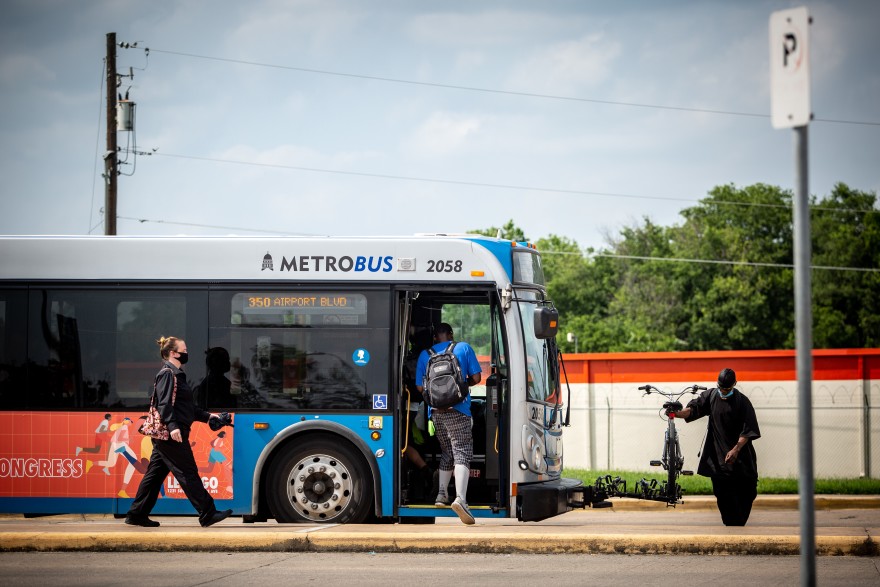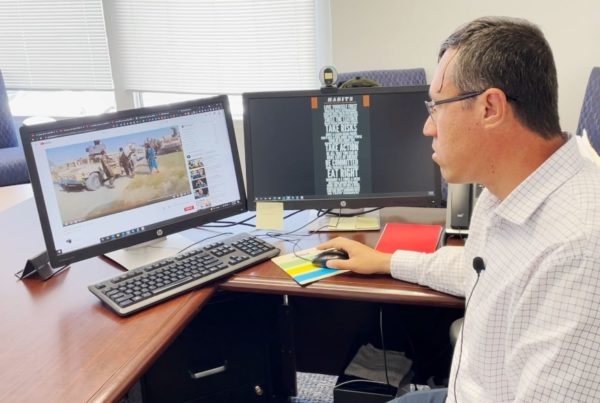From KUT:
The largest expansion of public transit in Austin’s history is built on an expectation the federal government will pick up almost half of the $7 billion tab. To qualify for those billions, Capital Metro first must demonstrate it’s not discriminating on the basis of race, national origin or income through a range of metrics — from the frequency of bus routes to who serves on advisory boards.
But activists and academics say the federal requirements intended to make transit more equitable often cripple local agencies by binding them to narrow rules or let agencies coast by not forcing equalized service for people of color and riders with low incomes.
If Cap Metro fails to secure federal funding, the rail and bus service promised to Austinites in exchange for the largest property tax increase in city history will suddenly be underfunded by 45%.
The plan, dubbed Project Connect, includes two light-rail lines with a downtown tunnel to circumvent traffic, enhanced bus service with an all-electric fleet, nine new park and rides, and various other transit improvements.
The federal government so far has signaled satisfaction with Capital Metro’s adherence to Title VI of the Civil Rights Act of 1964, landmark legislation that forms the basis of Federal Transit Administration rules for agencies to access federal funding. Agencies must update the FTA every three years on their efforts to adhere to Title VI. Cap Metro’s board approved its submission to the FTA last week.
Capital Metro’s own 266-page analysis, while finding itself in compliance with Title VI, also reveals some obvious disparities. The makeup of the organization’s two advisory panels is disproportionately white. Commuter rail service, which costs Cap Metro significantly more per trip than bus service, has 70% white ridership and caters to the agency’s wealthiest riders. During the midday, buses on routes that serve larger percentages of minority riders are more full and less punctual.
By other metrics, transit services in Austin's communities of color are superior to those in predominantly white neighborhoods. Shelter and amenity standards are better on minority routes, Cap Metro says. Minority routes have the correct bus assigned more frequently than nonminority routes.
Capital Metro meets other federal requirements to qualify for FTA grants, including providing help to people with limited English proficiency and making transit more accessible to low-income riders.

Title VI advocate Zenobia Joseph says Cap Metro should do more to reduce service-level disparities between people of color and white riders.
Gabriel C. Pérez
But transit activists say the federal standards fall short. Title VI advocate Zenobia Joseph says people of color would be better served by an emphasis on local routes that wind through neighborhoods instead of frequent service on major thoroughfares that Capital Metro has prioritized since the 2018 route overhaul, Cap Remap. That was Cap Metro's biggest service change ever, tripling the number of bus routes operating every 15 minutes. But Cap Remap also eliminated or rerouted some of the less frequent bus routes through neighborhoods.
"It was sold to us on every bus that it would bring more frequent, more reliable and better connected service," Joseph says. "Then they delivered infrequent, unreliable, disconnected service and more ways for people to get fired when they live in Northeast Austin."
She said she believes Project Connect's emphasis on light-rail and bus rapid transit will focus the local transit system even more on what the industry calls "choice riders" — typically wealthier and white users who have the option of taking a car — at the expense of "dependent riders."
"Project Connect will literally segregate Austin for centuries," she says, arguing that Title VI requirements should confront the disparities in who is using different transit services.
Academic observers say transit agencies are often bound by FTA's Title VI requirements and are disincentivized to take bold, transformative approaches at building equitable systems.

Alex Karner, an associate professor at UT Austin, has spent years examining how transit agencies implement federal civil rights requirements. Gabriel C. Pérez
"Agencies that try to do more are sometimes subject to additional legal exposure," says Alex Karner, a UT professor who has spent years looking at how civil rights guidance is implemented by transit agencies. "It might increase the risk of getting sued, because they've said something in a public meeting, or a public meeting has discovered something untoward that gets used in a lawsuit."
"Agencies are in a tough position," he said.
That's why many observers would like to see the FTA change how it holds transit agencies accountable.
"We really should be measuring not just how often does the bus stop in communities of color," says Steven Higashide with TransitCenter, a New York City-based nonprofit foundation that works on improving transit equity. "We should be asking what does transit actually allow people to reach? Are we doing a better job of providing transit access to health care, food and parks? Are we allowing people to access more potential jobs than we were before?"
Those are the types of questions TransitCenter tries to answer with its own technology, by using computers and software that have only become more accessible since the FTA issued its Title VI rules almost a decade ago.
"We've really had a computational revolution over the past 10 years that makes it possible for agencies to capture so much more of the experience that riders see," Higashide said. "It is time, I think, for the Federal Transit Administration to help bring this revolution into practice and help agencies along."
The FTA said in a statement that it has one of the most robust, effective Title VI programs in the federal government. While it is reviewing its guidance and seeking ways to make it better, the agency said, "we have not identified specific areas in need of improvement."














